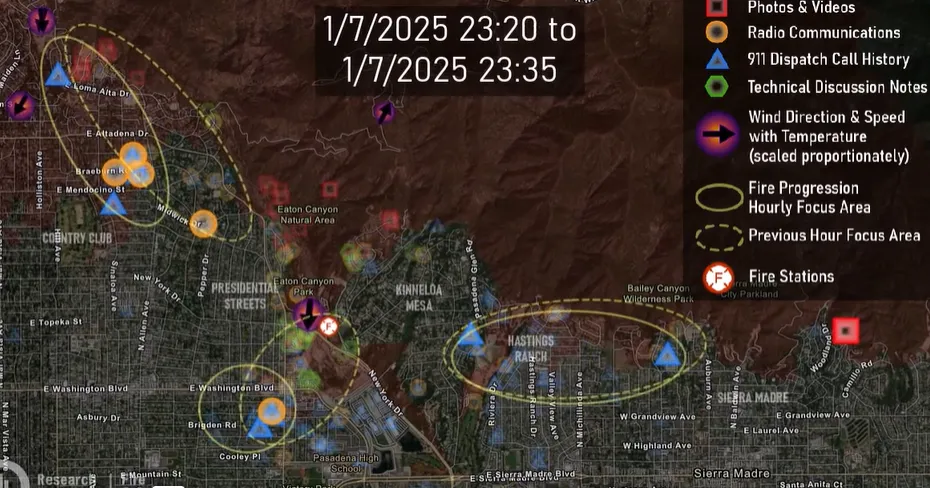Julie Sharp is a digital producer at CBS Los Angeles. She is a South Bay native and majored in print journalism at Cal State University Long Beach. Julie previously reported for the Beach Reporter, contributed to the Palos Verdes Pulse and worked as a video journalist for CBS News before joining the CBS News Los Angeles website team.
An extensive report of the January 2025 Southern California wildfires was released today as part of a comprehensive, independent review commissioned by the Office of the Governor of California.
The 350-page report documents 12 fires that occurred in January, with a primary focus on the Palisades and Eaton fires, providing a timeline of the fires' progression and the actions taken by emergency response agencies.
The UL Research Institutes' Phase One report used 911 calls, resident photos and videos, fire agency activity, and weather statistics.
Phase Two of the "Southern California Fires Timeline Report," which has not been released yet, will detail prevention, preparedness, and response efforts that include evacuation and fire suppression operations.
The nonprofit's in-depth analysis examined the region's history, noting that the Southern California area creates "persistent conditions conducive to wildfires." Studies included weather conditions inherent to the specific geography of the areas; native and invasive vegetation; utilities companies; and agencies that service the areas were also analyzed in the report.
"Comparing the fire progression and response timelines, it appears that the responding fire and emergency service agencies in this area of Southern California were overwhelmed by the number of concurrent fires; the fires' severity; the rapid, wind-driven fire spread through the built environment; and the resulting resource limitations," the report stated.
The day before the Eaton and Palisades fire broke out on Jan. 7, the National Weather Service elevated its forecast to a Particularly Dangerous Situation (PDS) Red Flag Warning, an alert reserved for extreme conditions where there is a high risk of property damage and loss of life.
"While both the Palisades and Eaton Fires' originated just north of the built environment in the foothills, the primary fuel for the fires was ultimately structural components, exterior/interior furnishings, common household contents, and vehicles, with additional fire spread driven by drought-stricken vegetation in rugged, steep topography, hurricane-force winds, and low relative humidities," the report stated.
Scientists with the fire research team also went on-site to study buildings that were completely and partially burned to study fire behavior, to create an hour-by-hour timeline of the events, which is in the Phase One report.
The report notes that changing land use patterns, development, grading, and land conversion have all altered the landscape where the Palisades and Eaton fires erupted. Native vegetation has been replaced or overtaken by non-native, fire-prone grasses and weeds, while landscaped homes and other areas further increased fire fuel.
"Combined with strong winds and steep terrain, these shifts have created more flammable, connected fuel beds, heightening both the frequency and severity of wildfires across the Santa Monica and San Gabriel Mountains," the report stated.
The massive multi-agency fire response would "ultimately be overmatched by the extreme fire behavior" of both the Palisades and Eaton fires, noting that fallen trees, utility poles, and wires blocked the roads for evacuation and response efforts. The report also noted that limited visibility and grounded aircraft due to dangerous wind conditions impeded fire-fighting efforts along with damaged or destroyed water distribution systems—with water spewing freely from pipes—draining water supplies and diminishing fire hydrant pressure.
"Losses of life and property occurred despite the herculean efforts of ordinary people, neighbors, and front-line first responders, who—despite the extremely dangerous conditions—were still able to save countless lives, homes, and businesses."
